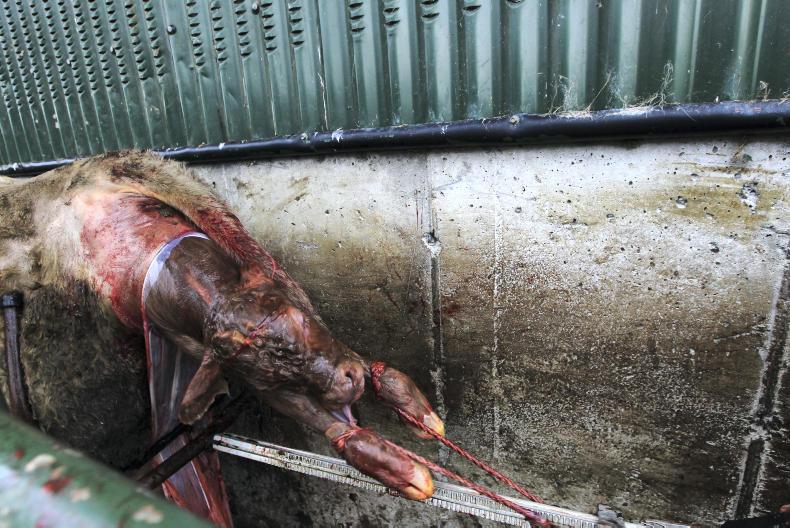Early spring-calving suckler herds are just around the corner from calving 2018.
Preparation, organisation, planning and good stock husbandry skills are all key management skills needed at calving time. Hygiene is extremely important around calving time.
You should have at least one calving box per 10 cows. This is where the cow and calf only remain in the box for one to two days.
If there is a tight calving spread, more calving pens will be needed. The boxes should be at least 3.6m x 4.0m in area.
Having a calving gate greatly eases management around calving time and is almost a must if a C-section is needed.
Having a hot water supply close to the calving pens is also very useful if needed in a hurry.
Calving pens should be thoroughly clean, power-washed and disinfected with a strong disinfectant before use.
I know straw is scarce on some farms but don’t skimp on straw around calving time. It’s very important that calves have a clean dry bed in their first days of life. Check the availability of basic calving equipment.
Things like disposable gloves for handling cows, spare calving ropes, iodine solution to treat navels, a clean calving jack that is not worn or liable to slip, lubricant, electrolyte powders for scour treatment and a clean stomach tube.
Frozen colostrum is a good insurance policy where there is inadequate supply or for the 4am calving.
Good-quality minerals should be fed to dry cows for a minimum of six weeks pre-calving. Take care with body condition score and avoid having animals being too fat at calving.
Equally important is the timing of restriction and cows shouldn’t be restricted too much coming close to calving.
Read more
Beef management: colostrum production
Early spring-calving suckler herds are just around the corner from calving 2018.
Preparation, organisation, planning and good stock husbandry skills are all key management skills needed at calving time. Hygiene is extremely important around calving time.
You should have at least one calving box per 10 cows. This is where the cow and calf only remain in the box for one to two days.
If there is a tight calving spread, more calving pens will be needed. The boxes should be at least 3.6m x 4.0m in area.
Having a calving gate greatly eases management around calving time and is almost a must if a C-section is needed.
Having a hot water supply close to the calving pens is also very useful if needed in a hurry.
Calving pens should be thoroughly clean, power-washed and disinfected with a strong disinfectant before use.
I know straw is scarce on some farms but don’t skimp on straw around calving time. It’s very important that calves have a clean dry bed in their first days of life. Check the availability of basic calving equipment.
Things like disposable gloves for handling cows, spare calving ropes, iodine solution to treat navels, a clean calving jack that is not worn or liable to slip, lubricant, electrolyte powders for scour treatment and a clean stomach tube.
Frozen colostrum is a good insurance policy where there is inadequate supply or for the 4am calving.
Good-quality minerals should be fed to dry cows for a minimum of six weeks pre-calving. Take care with body condition score and avoid having animals being too fat at calving.
Equally important is the timing of restriction and cows shouldn’t be restricted too much coming close to calving.
Read more
Beef management: colostrum production






 This is a subscriber-only article
This is a subscriber-only article










SHARING OPTIONS: